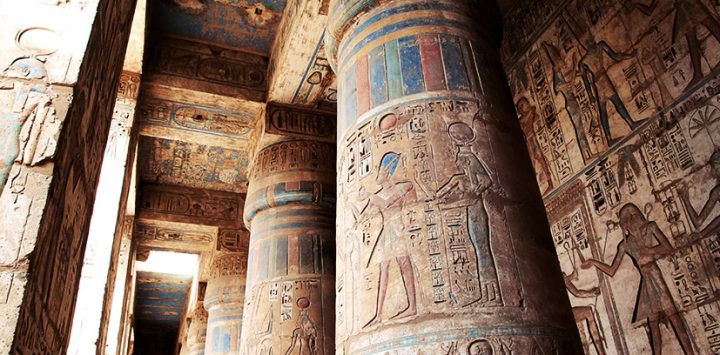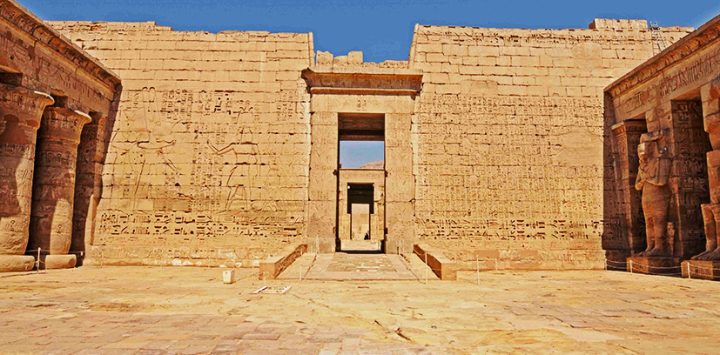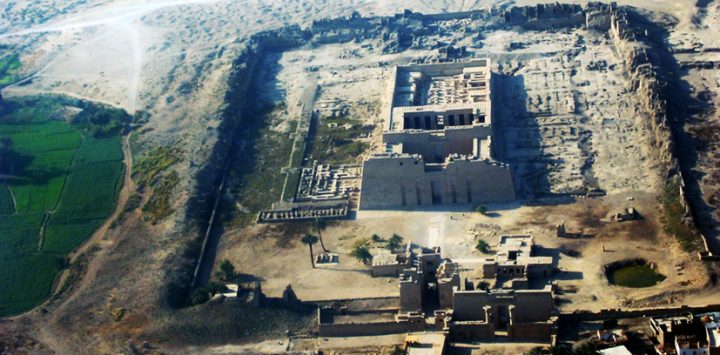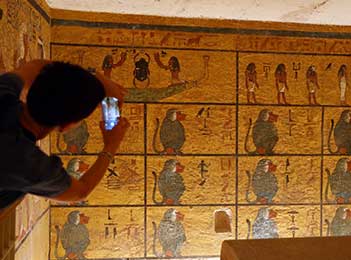The builder of the temple of Madinet Habu
Ramses III constructed his mortuary temple in that place that was later called Madinet Habu. He was the most famous king of the 20th dynasty in ancient Egypt and he ruled the country in the period from 1187 till 1156 BC.
The most important concern Ramses III had was to protect the Egyptian empire, especially these regions that were conquered by his father. This is besides the fact that he worked very hard to protect Egypt against the attacks of the tribes coming from Libya and some residences of the islands of the Mediterranean Sea and others coming from the East.
Ramses III was able to achieve all his objectives and he defeated the fleet of his enemy in one of the most famous naval battles in the ancient Egyptian history.
The history of the temple of Madinet Habu
It is believed that Ramses II has constructed this mortuary temple at the end of his ruling period around the middle of the 12th century BC and it was constructed for the worship of the god Amun.
The Temple of Ramses III in Madinet Habu was considered as one of the largest mortuary temples that were constructed in the reign of the New Kingdom. The surface area of the temple is actually huge with the length being 320 meters from East to West and the width being 200 meters from North to South.
It is believed that probably the temple was constructed in two phases. The first was the construction of the temple itself, the chapels and sections associated with it. The second phase included the outer walls, the two huge gates and some houses for the priests and the people who used to work in the temple.
The description of the temple of Madinet Habu
The walls surrounding the Temple of Madinet Habu are quite impressive and they were inspired by the fortified towers that were erected in Asia Minor.
Guests enjoying their vacation in Egypt enter inside the temple through a huge gate situated in the outer walls.
Situated to the right hand side of the entrance, there are the chapels of the gods’ wives of Amun while on the left hand side, there is a smaller temple that is believed to be constructed during the period of the 18th dynasty.
Afterwards, the guests would surly admire the huge impressive first pylon of the Temple of Ramses III in Madinet Habu. The pylon has some marvelous scenes of the massacres Ramses III committed against his enemies in the presence of the god Amun-Ra.
At the Southern quay afterwards, there are some fabulous bas-reliefs of buffaloes walking in the military march. It is worth mentioning that the side walls of the temple have wonderful bas-reliefs with a surface area of more than 7000 square meters.
The scenes in the Western section of the walls are quite remarkable as they display the naval battle when Ramses III was able to defeat the sea people, as the ancient Egyptians used to call the residences of the islands of the Mediterranean Sea.
The Temple of Madinet Habu has three hypostyle halls with many side chambers and they all lead at the end to the shrine of the god Amun.
The guests, afterwards, enter the second open courtyard that is called the court of the feasts. This was where the feasts of the procession of the sacred barks used to be carried out.
When the guests finish their touring of the Temple of Madinet Habu, they start exploring the royal palaces of Ramses III as he created this royal residence for himself and his noble family to view the feasts carried out in the temples.
The palace of Ramses III was divided into two sections. The first section consists of many wide halls that all lead to the throne large gallery. The second section has two bedrooms, a toilet, and a bathroom.
Although less visited than other temples in Luxor like the Karnak Temple, the Luxor Temple, and the Temple of Hatshepsut, the mortuary Temple of Ramses III is surely worth a visit by any tourists who visit Egypt. It is among the largest temples in Egypt. This is beside the fact that many of its colorful scenes carved on the walls have survived until today.









